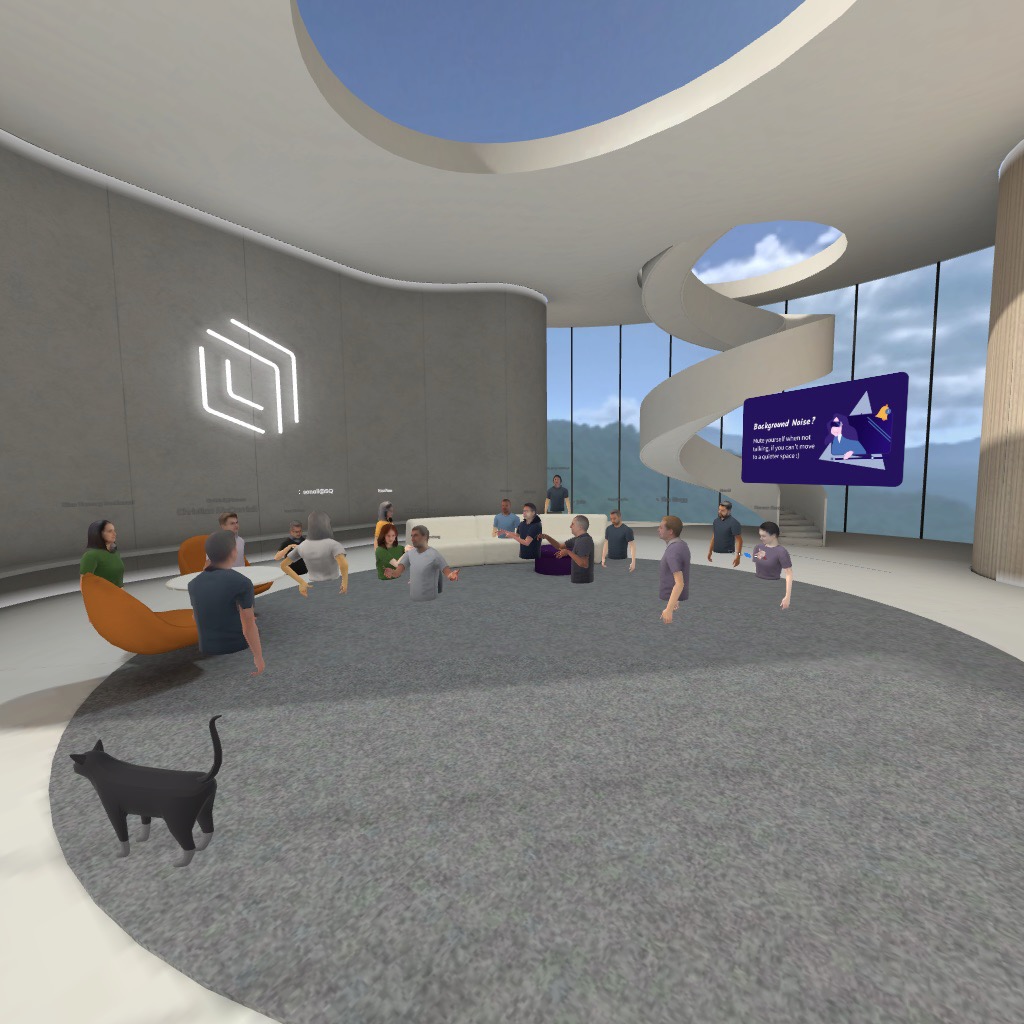A couple weeks ago, I received an OculusMeta Quest 2 VR headset, courtesy of the team at Plato with their first metaverse, virtual conference. The last time I messed around with VR was borrowing a friend’s original, first-generation Oculus Rift, so it’s been natural to see how much progress has been made in the intervening 5 years’ time. The short answer: pretty good on the hardware, underwhelming on the software.
The first commercial Oculus VR headset came about after a successful Kickstarter campaign in 2012 and 2 Oculus Dev Kits that eventually led to Facebook buying the company en route to launching the mass-market Oculus Rift. And while that first product was itself the result of many years and iterations on prototypical hardware, it was still a clunky setup—there was the Rift headset itself, 2 motion controllers, a USB cable to connect to a sufficiently beefy PC to run the apps, and 2 tracking sensors to calibrate the headset and controllers. It was viable only if you had a dedicated PC gaming space and wanted to spend $600 to believe in the potential of VR.
The Quest 2 has added a bunch of quality-of-life improvements. Gone is the need to connect to a PC and external GPU1, so there’s no annoying cable routing from the headset impeding head movements (as a big part of the immersion promised by VR is 360° views). All the hardware and battery needed to power it is fully encapsulated within the headset itself, and it’s powerful enough to power 2 LCDs—one for each eye, to create the 3D effect—at higher screen resolutions than the original Rift.
Machine learning and vision-tracking developments—culminating in a technology called inside-out tracking, which tracks spatial presence and controller movements from the headset itself—have proven to be a great alternative to external tracking sensors. You still need some open space to conduct things in VR, but the headset is more aware of when it extends beyond defined boundaries and will throw up warnings more immediately. This added layer of tech has essentially made VR headsets completely portable. Interestingly, it seems like the motion controllers originally defined by the Rift have stayed the same2.
The software side has seen less progress, comparatively. Most VR apps are available either on the Oculus app store, or via Steam’s dedicated SteamVR store. The operating system, as far as I can tell, hasn’t deviated too much from what the Rift originally showcased, which is also kinda what you’d stereotypically imagine what a VR space would look like: 3D-rendered landscapes in the background, floating screens of content, buttons that can be pointed to and clicked. The Quest runs Android underneath the hood, and even supports sideloading APKs like most other Android devices.
The VR space seems to be suffering from the cold start problem that is reminiscent of how new gaming consoles or hardware enter the market. There’s few apps & games to start, so there’s not much appeal for users to try using the system, and the small user base provides scant incentive for developers to spend time building software for the ecosystem. Usually the hardware manufacturer has to bootstrap their platform by building their own killer app; Halo for the Xbox, Zelda: Breath of the Wild for the Switch, Office for Windows.
There’s a rough equivalent with the Valve Index and Half-Life: Alyx, but that’s been pretty much it. In fact, the killer app for the Quest 2 may be the same app for the original Rift: Beat Saber, which remains a top seller for VR app stores 5 years running. Most other VR games fall into a handful of categories: physics simulators, first-person shooters, rhythm games, and interactive stories. The primary advantage of headsets is the ability to control the perspective by swiveling your head plus tracking the controllers in 3D space, so most games seem to just lean into the same categories.
Beyond gaming though, the bullish case for virtual reality is now around business, with Facebook rebranding itself as Meta to fully focus on this opportunity3. For the aforementioned Plato conference, we held it in Spatial, a so-called Metaverse app that felt a bit like the VR rendition of Second Life—a persistent virtual world, now 2 decades old, that went through its own boom and bust cycles during that time4. VR business software is still very early, so right now it’s more about the novelty factor in seeing others’ physical presences.
The speed of smartphone mainstream adoption has set a high bar for all subsequent emerging technologies. In the time between the release of the original Oculus Rift to the Quest 2, there’s been rapid iteration on the physical hardware—some of it propelled by phone technologies themselves and taking advantage of economies of scale for faster processors, better screens and longer-lasting batteries. The software side, though, is a bit underwhelming; use cases have not advanced much in this timeframe, and given that there are still some fundamental downsides—bulky & heavy headset, motion sickness, limited controllers—there’s still not enough compelling upsides to overcome these deficiencies. It’s still a fun gadget and the preferred way to reach the metaverse—just in quick, limited sessions.
There is an option to connect to a PC to take advantage of more graphical power, though—and there’s even a wireless Air Link implementation.↩
Much like gaming controllers, VR headsets seem to have standardized around a pair of motion controllers, each with an analog stick, a couple of face buttons, and triggers.↩
Other AR/VR projects have also made the shift, most notably Microsoft’s HoloLens and even the Magic Leap.↩
I actually interviewed there as a senior in college; didn’t get the job, though.↩



